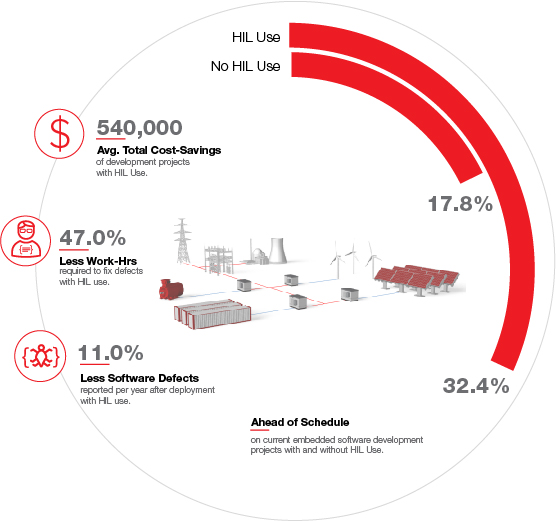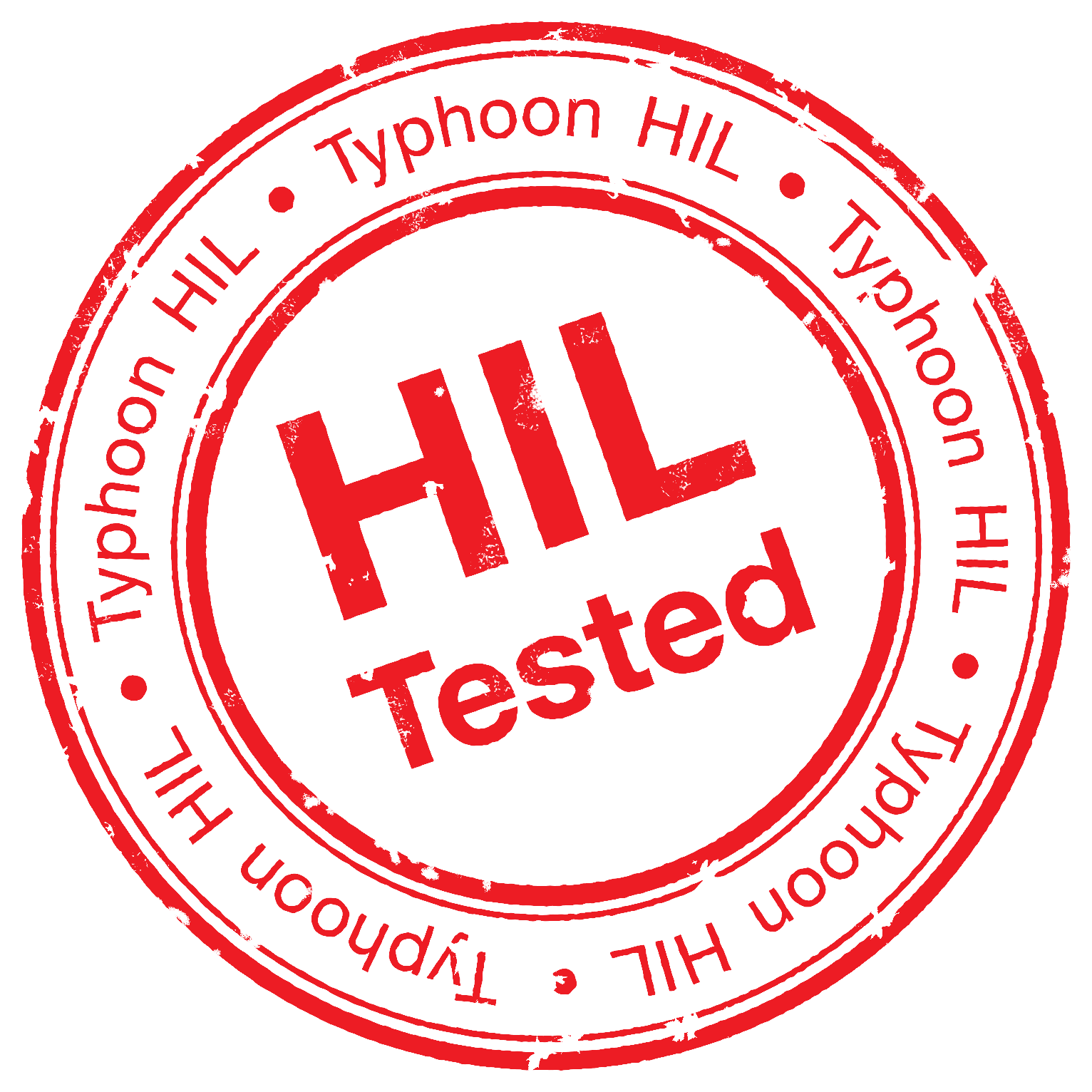Introduction
As the Industrial Revolution 4.0 is dawning on us, the digitalization of the utility grid and more broadly digitalization of our complete energy system is inevitable. While digitalization brings massive opportunities for value creation, it also brings significant challenges.
Considering the cyber-physical nature of the future grid, where massive amounts of sensors, communications, embedded computing, embedded controllers, and cloud software will dominate the operation and performance, industry leaders are embracing new design, test, deployment, and life cycle maintenance processes based on model-based engineering and more specifically model-based testing.

To extensively test and validate control and communication software before deploying to a PV inverter, distribution substation, electric vehicle, or microgrid controller is becoming critical for performance, reliability, safety, and cyber security. HIL Tested, providing the ability to test firmware and software in a safe, repeatable, and systematic way, is becoming the standard in power electronics and power systems.
Here are 7 key reasons why HIL Tested is becoming the cornerstone of software and firmware design, test, and lifecycle maintenance.
1. Airplanes have been HIL Tested for over 30 years.
HIL Testing has been a standard procedure in the aerospace industry for decades. From testing embedded controllers, and jet engine controller units, all the way to the autopilot. The safety criticality of airplane control systems has set the bar high in terms of control software development, testing, and maintenance processes. For example, no jet engine controller gets flight certified without an extensive record of HIL testing in addition to regular laboratory testing and a large number of flight hours. To maximize the test coverage, reduce the cost per test, and achieve needed reliability HIL testing has become a ubiquitous tool in aerospace.
2. Embedded software complexity is exponentially growing.
Embedded systems have seen exponential growth in complexity that can be roughly measured in source lines of code (SLOC). To illustrate this take a look at these 3 examples and the embedded code size growth over time:
- F35 fighter plane from 6.8M (SLOC) in 2006 to 17M (SLOC) in 2012
- Car (high end): from 2M (SLOC) in 2000 to 100M (SLOC) in 2018
- Solar inverter: from 50k(SLOC) to 200k(SLOC) in 2018
The exponential increase in functionality, safety, and reliability, has turned embedded systems into powerful computers and flipped the business model. From selling fixed hardware units to selling smart and flexible devices and systems with ever-increasing functionality realized from new embedded software and software updates and upgrades.
Taming the software complexity, maintaining the insight into development status, as well as the ability to continue to reduce time to market can only be achieved with advanced test processes that hinge on HIL model-based testing.
3. Improve software quality, reduce software bugs by 38%
How does one maintain and improve software quality while battling with exponential growth in complexity?
It is simple: Religious following of test processes, adoption of test-driven design, continuous integration, continuous testing during development, great test coverage, and test automation.
VDC research shows a 38 % reduction in the number of software bugs when Hardware in the Loop is used early on in the design process and throughout the life cycle maintenance process.
4. Reduce the cost of fixing software bugs by 70%.
How does one reduce software development time as the code complexity is exploding, the number of software developers is growing, and while constantly facing cost reduction pressure?
VDC research shows a 70 % reduction in the cost of fixing bugs if embedded software is developed and tested using the C-HIL methodology. Again, the answer is simple: Religious following of model-based testing processes.
5. Innovate with confidence. Innovate faster.
Traditionally, the power electronics and power systems industries have been very slow to release new products and new functionalities. Testing in the lab and in the field was the only way of testing power converters and mistakes were costly. The mentality has been “if it works don’t change” That led to product design cycles of 5+ years and product life cycles from 25-30 years.
HIL Testing is flipping this paradigm upside down and is empowering developers to continuously improve and evolve functionality by adding new software functions.
6. Reduce time to market.
Automating testing processes, adopting continuous integration, and embracing test-driven design have proven as the sure recipe for continuous reduction of time to market for new products. Code reuse, including test reuse and advanced CI processes, enables adding new functionality to become a routine process. When new controller functions don’t have to be tested in the lab for weeks and months the product development lens changes.
Take the example of modern cars: The majority of new value-added functionalities are derived from embedded software. Power electronics converters are no different. The next generation cyber-physical power grid will be no different.
7. Empower system integrators.
Integrating new and ever more intelligent and capable inverters as wells as other smart devices on the grid is more complex than just plugging an appliance into a system. It requires an understanding of the system, interactions, inter-dependencies, etc. Also, as the inverters are evolving, system integrators need tools to explore and evaluate the implications. Controller Hardware in the Loop provides a perfect Digital Twin of the device that needs to be integrated and enables system integrators to test, evaluate, and modify the component with minimal cost and effort.
Credits
Author | Ivan Celanovic
Visuals | VDC Research
Editor | Debora Santo



